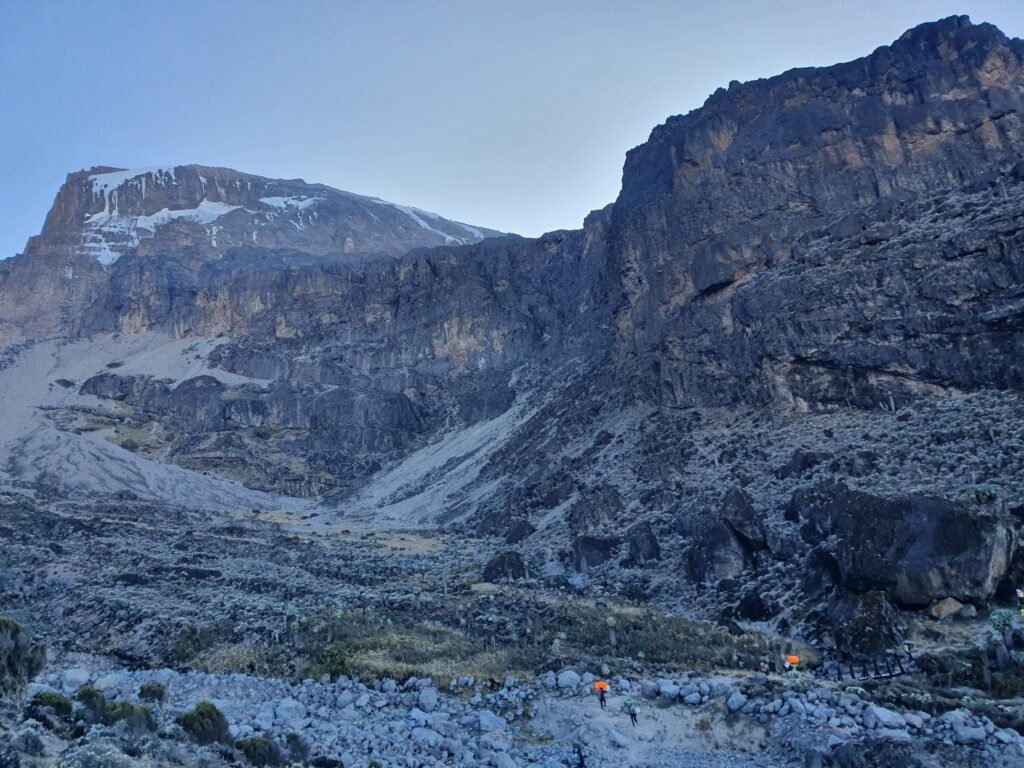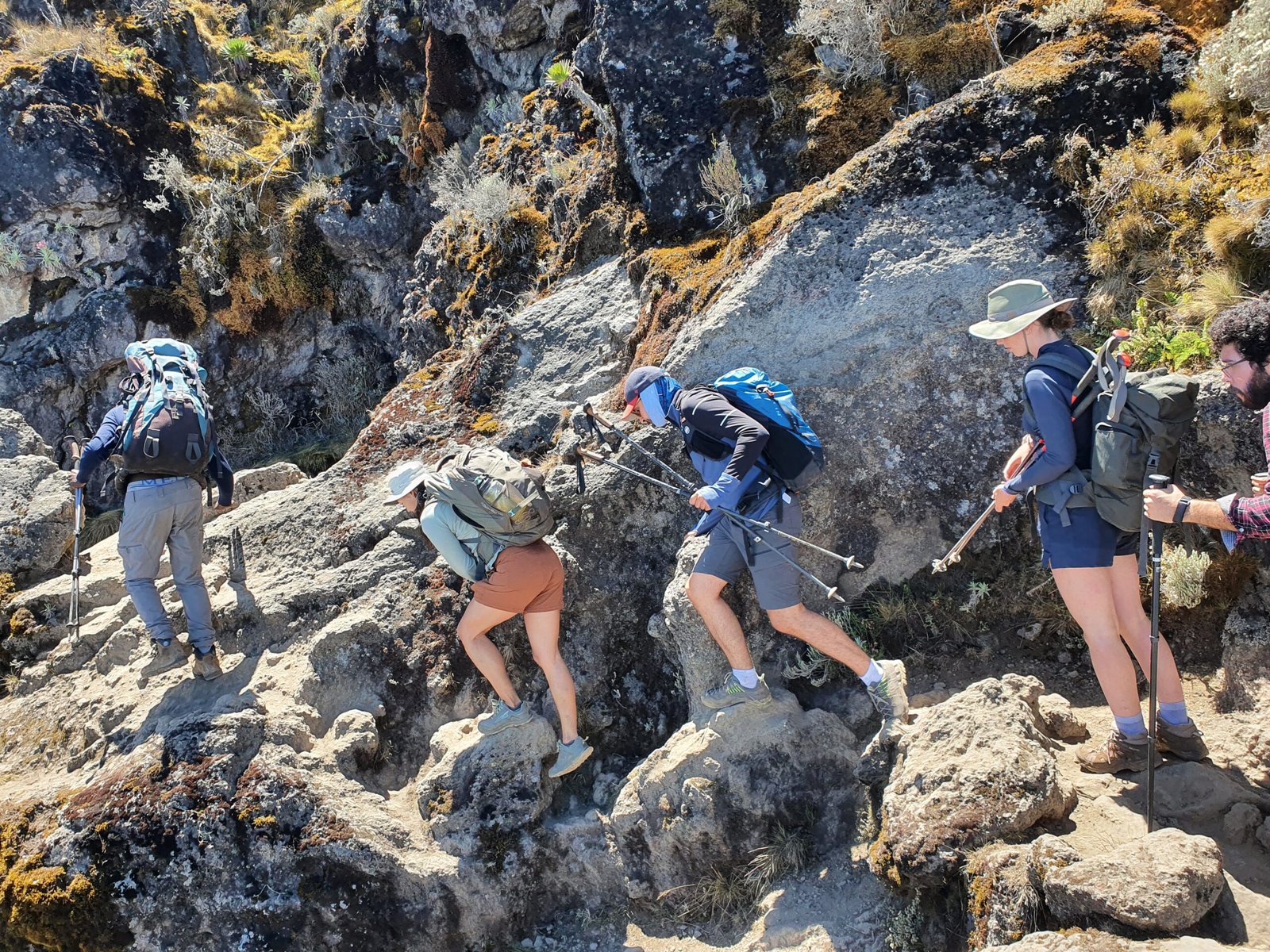The Best Worldwide-Class Six (6)-Days Kilimanjaro Climbing Marangu 2025&2026
The Best Worldwide-Class Six (6)-Days Kilimanjaro Climbing Marangu 2025&2026 , known as the “Coca-Cola Route,” is one of the most well-known paths for summiting Mount Kilimanjaro, Africa’s tallest peak at 5,895 meters (19,341 ft). The 6-day itinerary is designed to provide an additional day for better acclimatization compared to the shorter 5-day option, which significantly increases the success rate of reaching Uhuru Peak.

The Best Worldwide-Class Six (6)-Days Kilimanjaro Climbing Marangu 2025&2026 is the only one on Kilimanjaro offering hut accommodations, providing climbers with sheltered sleeping arrangements at each camp rather than tents. The path is relatively straightforward, with a gradual ascent, making it one of the more accessible routes, though it still presents a physical challenge. With lush rainforests, open moorlands, and an alpine desert, the Marangu Route offers a unique journey through Kilimanjaro’s diverse ecosystems.
The 6-day Marangu climb is ideal for those seeking a comfortable and rewarding trek with a high success rate for the 2025 and 2026 seasons, combining natural beauty with the challenge of summiting Africa’s highest peak.
The Best Worldwide-Class Six (6)-Days Kilimanjaro Climbing Marangu 2025&2026 day by day Itinerary
Day 1: Marangu Gate to Mandara Hut
Elevation: 1,870 meters (6,135 ft) to 2,720 meters (8,923 ft)
Hiking Distance: 8 km (5 miles)
Hiking Time: 4-5 hours
Habitat: Rainforest
Your adventure begins at Marangu Gate, where you’ll register and meet your guides before starting your trek. The trail on Day 1 leads through the lush Montane Forest, offering cool shade, dense vegetation, and the chance to spot wildlife such as blue monkeys and various bird species.
The hike to Mandara Hut is relatively easy, taking about 4-5 hours on a well-maintained path. Mandara Hut offers dormitory-style accommodation in cozy A-frame huts, providing a comfortable place to rest for the night. If time permits, you can take a short side trek to Maundi Crater, where you’ll enjoy sweeping views of the Kenyan plains.
Day 2: Mandara Hut to Horombo Hut
Elevation: 2,720 meters (8,923 ft) to 3,720 meters (12,205 ft)
Hiking Distance: 12 km (7.5 miles)
Hiking Time: 6-8 hours
Habitat: Moorland
On Day 2, you’ll leave the rainforest behind and enter the moorland zone, where the landscape opens up and the air becomes cooler. The trail becomes steeper, and the vegetation changes dramatically to tall grasses, giant lobelias, and Senecio trees.
The path provides expansive views, including your first glimpses of Mawenzi Peak in the distance. After about 6-8 hours of trekking, you’ll reach Horombo Hut, where you’ll spend the night. Horombo offers views of both Kibo Peak and Mawenzi, and the accommodations are similar to those at Mandara Hut, with dormitory-style huts and a communal dining hall.
Day 3: Acclimatization Day at Horombo Hut
Elevation: 3,720 meters (12,205 ft)
Hiking Distance: Optional hike to Zebra Rocks or Mawenzi Ridge
Hiking Time: 3-4 hours (optional)
Habitat: Moorland
Day 3 is reserved for acclimatization, which is crucial for increasing your chances of reaching the summit. You’ll spend a second night at Horombo Hut, allowing your body to adjust to the higher altitude.
To aid in acclimatization, many climbers take a short hike to Zebra Rocks (4,000 meters / 13,123 ft), a striking rock formation with black-and-white stripes, or venture further to Mawenzi Ridge. This day follows the “climb high, sleep low” strategy, helping your body get used to the lower oxygen levels at higher altitudes.
Day 4: Horombo Hut to Kibo Hut
Elevation: 3,720 meters (12,205 ft) to 4,703 meters (15,430 ft)
Hiking Distance: 10 km (6.2 miles)
Hiking Time: 6-8 hours
Habitat: Alpine Desert
On Day 4, you’ll begin your ascent toward Kibo Hut, crossing the Saddle, a vast, barren plateau between Mawenzi and Kibo Peaks. The trail becomes more rugged and rocky as you enter the alpine desert zone, with little vegetation and a stark, desolate landscape.
This part of the trek can feel more challenging due to the higher altitude and thinner air, so it’s important to maintain a slow, steady pace. After 6-8 hours of hiking, you’ll arrive at Kibo Hut, where the atmosphere is quieter as climbers prepare for the summit attempt. You’ll have an early dinner and go to bed early, as the summit push begins just after midnight.
Day 5: Kibo Hut to Uhuru Peak, Then Descend to Horombo Hut
Elevation: 4,703 meters (15,430 ft) to 5,895 meters (19,341 ft) (Uhuru Peak), then descend to 3,720 meters (12,205 ft)
Hiking Distance: 22 km (13.7 miles) (ascent and descent)
Hiking Time: 10-16 hours
Habitat: Arctic to Alpine Desert
Summit day begins around midnight, with climbers embarking on the most challenging part of the trek. The ascent from Kibo Hut to Gilman’s Point (5,685 meters / 18,651 ft) is steep and involves a series of switchbacks over loose scree, making it a tough climb in the cold, thin air.
After reaching Gilman’s Point on the crater rim, you’ll continue to Uhuru Peak, the highest point in Africa. The final push to Uhuru Peak takes about 1-2 hours and is both physically and mentally demanding, but the feeling of accomplishment upon reaching the summit is unparalleled. From the summit, you’ll be rewarded with stunning views of Kilimanjaro’s glaciers, craters, and the expansive African plains below.
After celebrating your achievement at the summit, you’ll begin the long descent back to Horombo Hut, stopping at Kibo Hut for a short rest. The descent is easier but can be tough on your knees, and the lower altitude at Horombo Hut will feel much more comfortable after your summit day.
Day 6: Horombo Hut to Marangu Gate
Elevation: 3,720 meters (12,205 ft) to 1,870 meters (6,135 ft)
Hiking Distance: 20 km (12.5 miles)
Hiking Time: 5-7 hours
Habitat: Moorland to Rainforest
On your final day, you’ll descend back through the moorland and into the rainforest, retracing your steps toward Marangu Gate. The descent is long but manageable, and as you move to lower altitudes, you’ll feel the air become warmer and more humid.
Upon reaching Marangu Gate, you’ll sign out and receive your summit certificate—green for those who reached Gilman’s Point and gold for those who summited at Uhuru Peak. From here, a vehicle will transfer you back to Moshi or Arusha, where you can celebrate your achievement with a well-deserved rest and hot meal.
Why the best Worldwide-Class Six (6)-Days Kilimanjaro Climbing Marangu 2025&2026 is the Best Worldwide-Class Climb
Additional Acclimatization Day: The 6-day itinerary includes an extra day for acclimatization at Horombo Hut, which improves the chances of successfully reaching the summit and reduces the risk of altitude sickness.
Hut Accommodations: Unlike other routes that require camping, the Marangu Route offers permanent huts for accommodations, providing more comfort and protection from the elements, especially at higher altitudes.
Well-Established Trail: The Marangu Route is one of the most straightforward trails on Kilimanjaro, with a steady incline and clearly marked paths, making it ideal for first-time climbers or those seeking a less rugged adventure.
High Success Rate: The gradual ascent and extra acclimatization day contribute to a higher summit success rate compared to shorter routes. With proper pacing and hydration, most climbers can successfully reach Uhuru Peak.
Scenic Beauty: Despite being one of the quicker routes to the summit, the Marangu Route takes climbers through Kilimanjaro’s diverse ecosystems, from rainforests to alpine deserts and glaciers, offering a rich and varied trekking experience.
Tips for a Successful 6-Day Kilimanjaro Climb (2025 & 2026)
Prepare Physically: Regular hiking, cardio, and strength training exercises before the trek will improve your stamina and increase your chances of a successful summit.
Hydration is Key: Drink 3-4 liters of water per day to stay hydrated and help your body adjust to the high altitude.
Pace Yourself: Follow your guide’s pace, often slower than you may feel necessary. A steady, measured pace will conserve your energy and make it easier to cope with the altitude.
Pack Wisely: Bring proper layers for the changing climate zones, including warm clothing for summit night and a high-quality sleeping bag for the cold nights at higher camps.
The Best Worldwide-Class Six (6)-Days Kilimanjaro Climbing Marangu 2025&2026 inclusive and exclusive
Package Inclusion & Exclusions
Inclusion
Guide, Porters
Park Fees, Tax
Gate transfer
Crew wages
Environment fees
Camping throughout you climb!
Breakfasts, Lunches, Dinners
Drinking water
Cook
Exclusion
Flights
Tipping the crew
Visas

